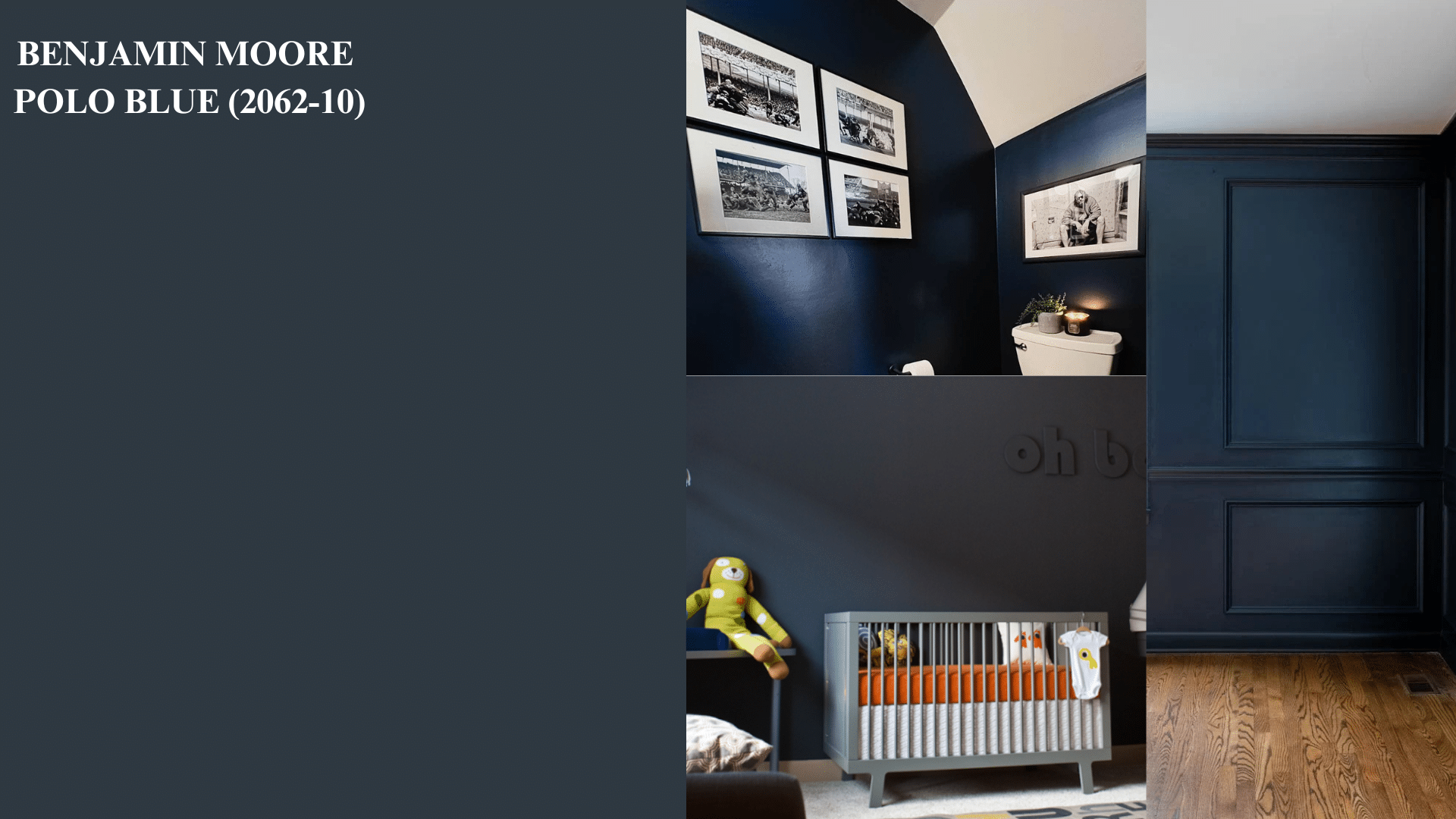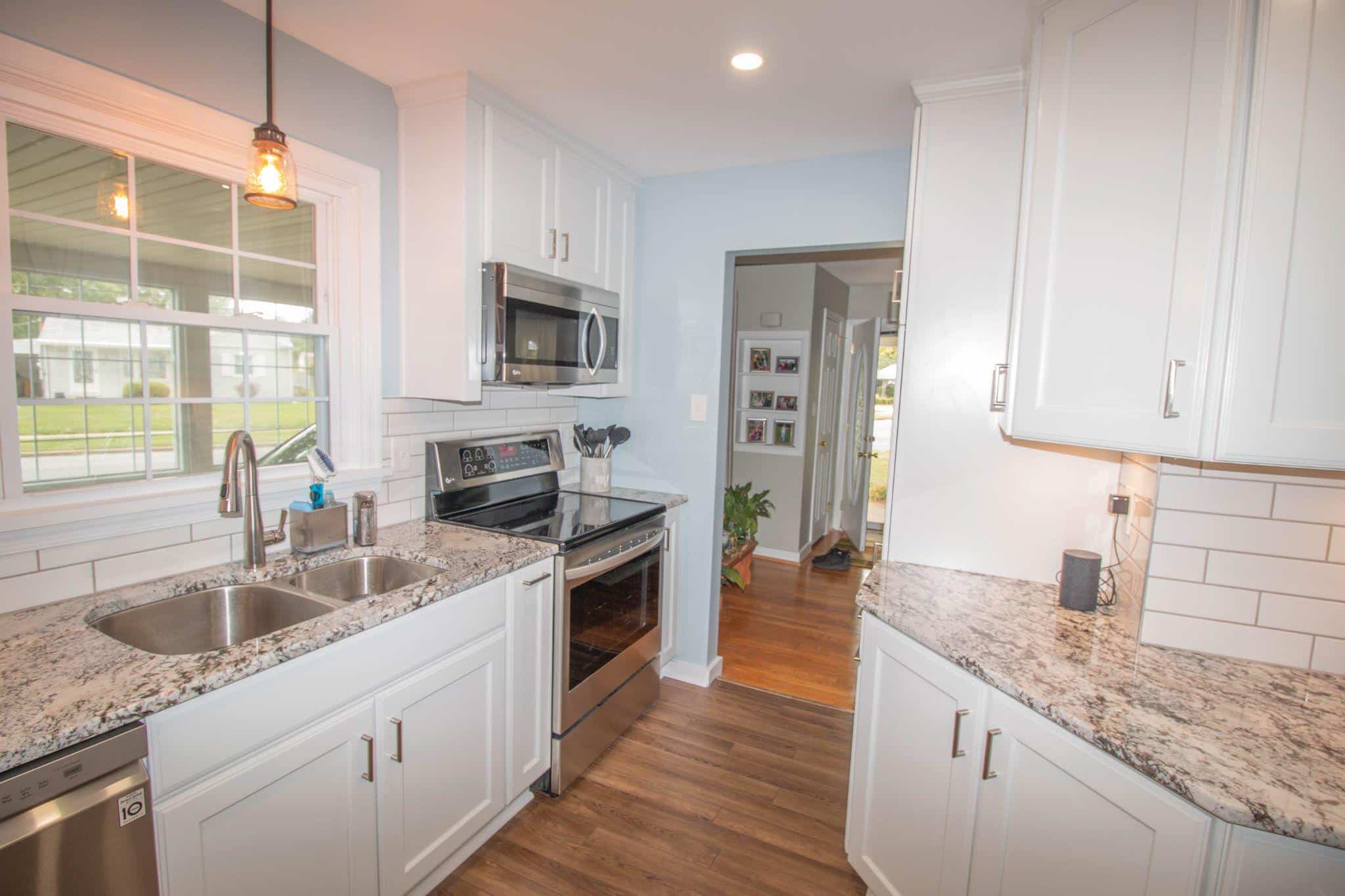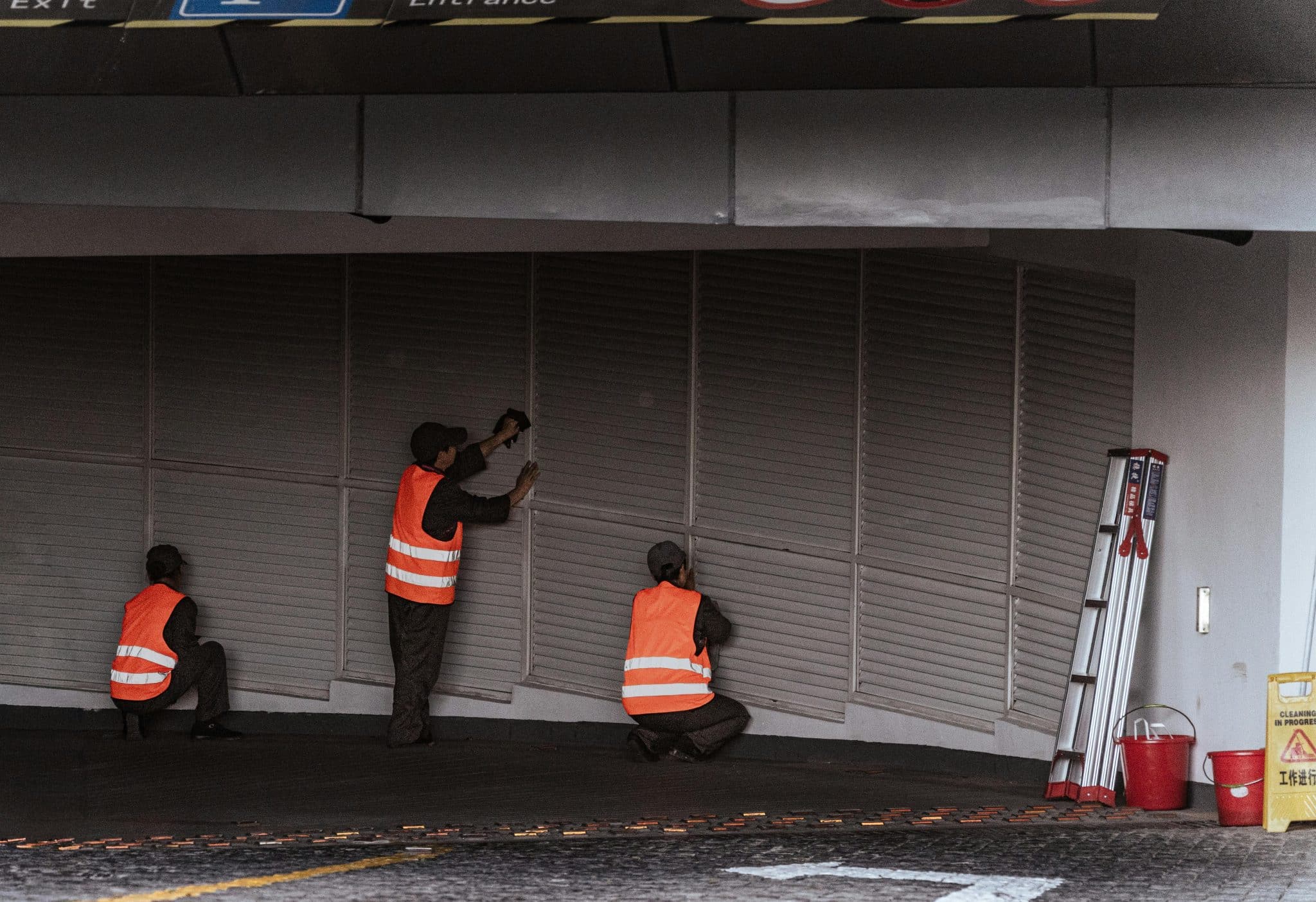Interior painting often feels overwhelming – picking the right color means spending hours comparing shades, checking different lights, and still unsure about the final choice.
I know this feeling well, having helped many homeowners who struggled with color selection.
I can tell you that Benjamin Moore Polo Blue stands out as a reliable choice that fits many spaces and styles.
This color brings a sense of calm, making rooms feel spacious and welcoming.
In this post, I’ll show you everything about Polo Blue: its unique qualities, the best rooms to use it in, Ideal lighting conditions, and perfect color combinations.
I’ll also share real examples of how this shade works in different settings.
What is Benjamin Moore Polo Blue?
Polo Blue by Benjamin Moore brings a timeless blue shade to your home. As a color consultant, I’ve seen this shade create beautiful results in modern and traditional spaces.
It reminds me of a clear winter sky – not too light or dark, but perfectly balanced.
I often recommend this color for clients who want a blue that feels sophisticated without being overwhelming. In my experience, Polo Blue works exceptionally well in bedrooms, living rooms, and home offices.
The color creates a peaceful feeling while maintaining enough depth to add character to any room.
The Undertones of Polo Blue

When I examine Polo Blue closely, I notice subtle gray and green undertones that make this color special.
These undertones give the paint depth and help it change throughout the day. In my projects, I’ve observed how morning light brings out the blue notes while evening light highlights the gray undertones.
Understanding these undertones has helped me guide my clients. For example, the gray undertones in north-facing rooms become more noticeable, creating a cooler feel.
In south-facing spaces, the color appears warmer and more vibrant.
LRV (Light Reflectance Value) of Polo Blue
The Light Reflectance Value (LRV) shows how much light bounces off a color. Polo Blue has an LRV of 4, making it a deeply saturated color that absorbs most light.
To put this in perspective, pure black has an LRV of 0, while pure white has an LRV of 100.
I’ve noticed that this low LRV creates an intimate space feeling in my design work. When I use Polo Blue, I plan the lighting carefully. I recommend this shade for rooms with plenty of natural sunlight or good artificial lighting systems.
I often suggest using Polo Blue as an accent wall for smaller or dimly lit spaces rather than painting all walls.
This approach lets you enjoy the color’s rich depth while maintaining brightness in the room. I’ve found that pairing it with lighter colors (LRV 50 or higher) helps balance the overall room lighting.
Best Combinations with Polo Blue
Through my years of working with color, I’ve found several combinations that make Polo Blue shine. I love pairing it with crisp white trim (Benjamin Moore White Dove) for a classic look.
For a warmer feel, I recommend combining it with soft cream colors.
When clients ask about accent colors, I suggest:
- Warm brass or gold hardware
- Natural wood tones
- Soft silver-gray shades
- Light beige or sand colors
I’ve noticed these combinations help balance Polo Blue’s deep tone while creating visual interest in the space.
How to Paint with Polo Blue
From my hands-on experience, here’s my step-by-step approach:
1. Surface Preparation
- Clean walls thoroughly
- Fix any holes or cracks
- Sand rough spots
- Use a good-quality primer
2. Application Tips
- I always use two coats for full coverage
- Allow proper drying time between coats (4-6 hours minimum)
- Use high-quality brushes and rollers
- Work in small sections for better control
3. Pro Tips
- Test the color on a large sample board first
- Move the sample around the room throughout the day
- Use proper ventilation while painting
- Keep a wet edge to avoid lap marks.
Why Choose Benjamin Moore Polo Blue?
From my experience working with countless paint colors, Polo Blue stands out for several key reasons:
Quality and Coverage As a Benjamin Moore color, Polo Blue offers outstanding coverage. It typically requires just two coats for a smooth, even finish.
The paint’s formula helps it stick well to properly prepared surfaces, which means longer-lasting results for my clients.
Versatility in Design: What I love most about Polo Blue is how it fits different styles. I’ve used it in:
- Traditional homes with crown molding
- Modern spaces with clean lines
- Coastal-inspired rooms
- Professional office settings
Color Stability: One aspect I particularly value about Polo Blue is its color stability. Polo Blue consistently maintains its true color tone, unlike some blues that can appear too bright or gray. When my clients choose this shade, they get exactly what they expect.
Mood-Setting Capabilities: The depth of Polo Blue creates specific moods in different spaces:
- In studies: It helps create focus
- In bedrooms: It promotes rest
- In living rooms: It adds sophistication without feeling cold
Cost-Effective Choice: While Benjamin Moore paints might cost more initially, I’ve seen how their durability saves money over time. Polo Blue’s quality means fewer touch-ups and longer times between repaints.
Best Uses of Polo Blue in Home Design
Living Room Spaces
Polo Blue brings a sense of calm to living rooms while maintaining sophistication. When I paint living rooms with this color, I usually pair it with light upholstery and natural textures.
The color works wonderfully on all walls, but I suggest using it on a single wall with white or cream companions for smaller spaces.
Primary Bedrooms
In bedrooms, Polo Blue creates a peaceful retreat. I often recommend this shade to clients who want their bedroom to feel like a private sanctuary.
The color’s low LRV of 4 helps create ideal sleeping conditions, particularly when combined with soft, layered lighting.
Home Office Settings
I’ve noticed Polo Blue helps create focus without feeling stuffy for home offices. I typically suggest painting all walls in smaller offices, as the color creates a cocoon-like effect that enhances concentration.
The shade pairs beautifully with wooden desks and brass light fixtures.
Built-in Bookcases
One of my favorite ways to use Polo Blue is on built-in bookcases. The deep color creates a stunning backdrop for books and decorative items. I’ve found it makes white-spined books and metallic accessories stand out beautifully.
Kitchen Islands
While not commonly used in kitchens, I’ve successfully used Polo Blue on kitchen islands. It contrasts with white cabinets and works wonderfully with marble or quartz countertops.
Bathroom Vanities
Polo Blue adds character without overwhelming the space for bathroom furniture, especially vanities. I recommend using a pearl or satin finish here for better moisture resistance.
Room Direction Impact of Benjamin Moore Polo Blue
North-Facing Spaces
In these rooms, I notice Polo Blue shows its cooler side. The gray undertones become more noticeable, creating a serene atmosphere.
I always include additional lighting sources in these spaces to maintain the color’s rich character throughout the day.
South-Facing Rooms
The consistent light in south-facing rooms brings out Polo Blue’s warmth. I’ve found the color maintains stability here, with the blue tones becoming more prominent.
This creates an inviting atmosphere that stays balanced from morning to evening.
Lighting Effects of Benjamin Moore Polo Blue
Natural Light Effects
Natural lighting creates fascinating changes in Polo Blue throughout the day. In my experience working with this shade, I’ve noticed how it shifts and adapts to different light conditions, making it a versatile choice for various spaces.
Morning Light
The early hours bring out Polo Blue’s clearest expression. I’ve observed how morning light reveals the true blue tones while gently highlighting the subtle gray undertones. This makes breakfast nooks and east-facing rooms feel fresh and bright, even with the color’s low LRV of 4.
Afternoon Sun
As the day progresses, the color takes on a richer quality. I’ve seen Polo Blue develop increased depth in west-facing rooms without becoming too dark. The color’s ability to absorb light helps create comfortable spaces during intense afternoon sun.
Artificial Light Considerations
LED Lighting
I recommend warm white LED bulbs (2700K-3000K) with Polo Blue. These bring out the true blue tones while creating a comfortable evening atmosphere. The right LED lighting helps counteract the color’s low LRV after sunset.
Halogen Effects
When using halogen bulbs, I’ve noticed they add a subtle warmth to Polo Blue. This combination works particularly well in reading corners or study areas, where the light quality must be comfortable and clear.
Fluorescent Impact
I think standard fluorescent lighting isn’t ideal for Polo Blue. It can flatten the color’s rich qualities. If fluorescent lights are unavoidable, I suggest using high-quality daylight fluorescent bulbs to maintain the color’s true nature.
Conclusion
In this guide, I’ve shared everything about Benjamin Moore Polo Blue, from its rich character to its practical applications.
The color’s low LRV of 4 and its subtle undertones make it a thoughtful choice for creating spaces that feel both grounded and refined.
Remember, success with Polo Blue comes down to proper preparation, understanding your room’s lighting, and choosing the right finishes for each space.
Whether painting a cozy bedroom, a focused home office, or adding depth to built-in features, this color offers lasting appeal.
Ready to start your painting project? Take time to test the color in your space, prepare your surfaces well, and follow the application tips.















